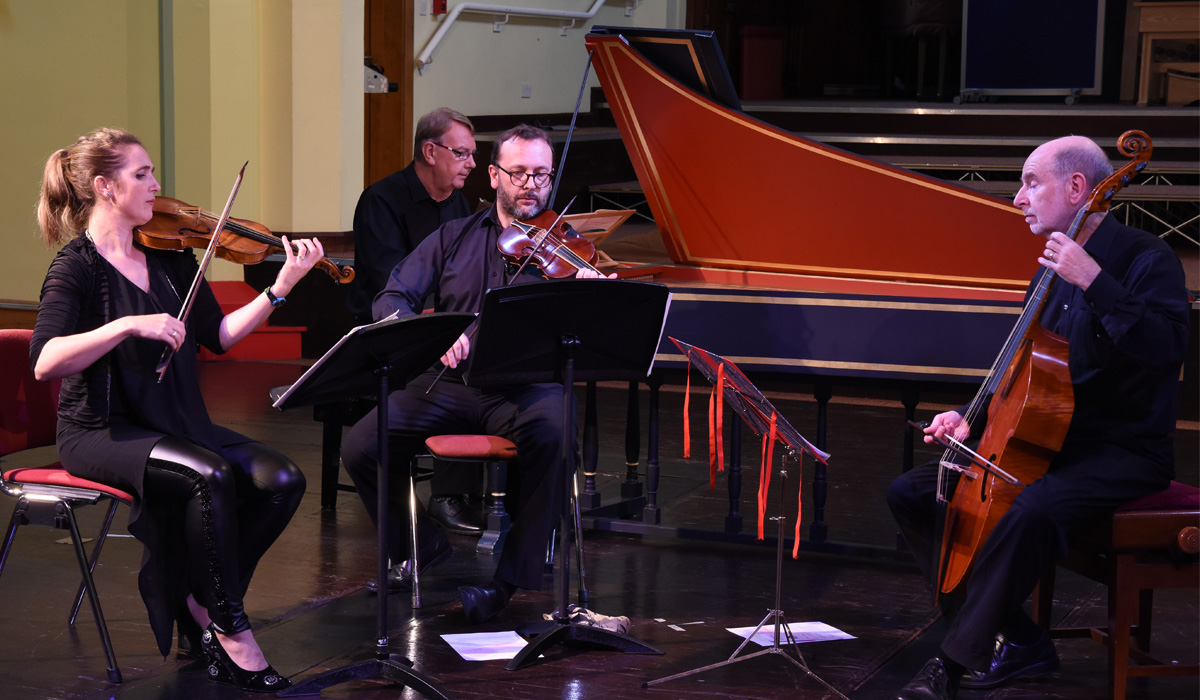The SVP Festival welcomed early music ensemble-in-residence Four’s Company for a concert entitled An Entente Cordiale featuring music of the 1600s and 1700s performed on replica period instruments.
 Four’s Company in concert (l-r) Dr Amanda Babington, Dr Graham Cummings, Dr David Milsom and Professor John Bryan
Four’s Company in concert (l-r) Dr Amanda Babington, Dr Graham Cummings, Dr David Milsom and Professor John BryanPERFORMERS, researchers and students at the University of Huddersfield are exploring the past – to find out what it sounded like.
The University’s Music Department houses the Research Centre in Performance Practice (ReCePP). It includes an Early Music Research Group, which has an ensemble-in-residence named Four’s Company that specialises in instrumental music of the 17th century, which was often innovative and experimental.
Consisting of two baroque violins, a bass viol and harpsichord or organ, the ensemble gave its first performance of the new season during a midday concert at the University’s St Paul’s Hall.
The performance was part of the Sound.Vision.Place Festival, a year-long series of events celebrating the diversity and quality of activity, debate and performance that takes place within the University’s School of Music, Humanities and Media.
Introducing the group and its remit, Professor John Bryan, who is a leading researcher and player of the bass viol, explained that he and his colleagues – violinists Dr David Milsom and Dr Amanda Babington, plus keyboard player Dr Graham Cummings – were all “performing musicologists”.
Using instruments of the sort that were played during the period of the music could lead to a much greater understanding of it, he added, and he urged students to carry out their own research and use it to shape their interpretations of past repertoire.
The concert was sub-titled An Entente Cordiale and had music of the 1600s and 1700s from the English composers Henry Purcell and John Blow, and from their French contemporaries Jacques Hotteterre and Francois Couperin. The influences of Italian music on both musical cultures was also explored.
The concert was followed by a workshop at which students were given the opportunity to try some of the replica early wind and stringed instruments that the University Music Department has available for them to play when they make their own journeys into the musical past.
American Musical Instrument Society’s top award
Early English Viols: Instruments, Makers and Music, co-authored by Professor John Bryan, takes the Nicholas Bessaraboff Prize
Girl power in Italy’s 16th century music
Professor Laurie Stras explores the impact of nuns and the convent in shaping music of the Italian Renaissance
CD combines ancient music with electronica music
Professor combines his two careers as an explorer of ancient music and major festivals DJ to create the CD, Dub Archaeology
